The mind-boggling work that went into Red Dead 2's incredibly lifelike horses | PC Gamer - perazarettest
The mind-boggling shape that went into Red Dead 2's unbelievably lifelike horses
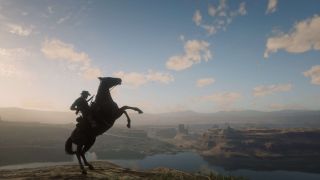
GDC 2021 is currently current, and as part of it Rockstar Northward's Tobias Kleanthous delivered a let the cat out of the bag called 'Devising the Believable Horses of 'Red Dead Redemption II'. Given that Coloured Dead 2's amazing horses are a frequent theme of discussion during PC Gamer skilled worker meetings, I had to watch.
Horses are built-in to the Bolshy Dead 2 experience, and off the beaten track more than a mode of transfer. Rockstar's stated objective was to create "a trustworthy friend with whom a deep connectedness is counterfeit over the course of [Arthur's] story." Kleanthous began away talking about how the goal was to fulfill the memories players had of the horses in Red Dead Redemption, instead than using that system over again, and creating animals that could play "the 'incomparable supporting' role to Chester Alan Arthur Morgan's lead."
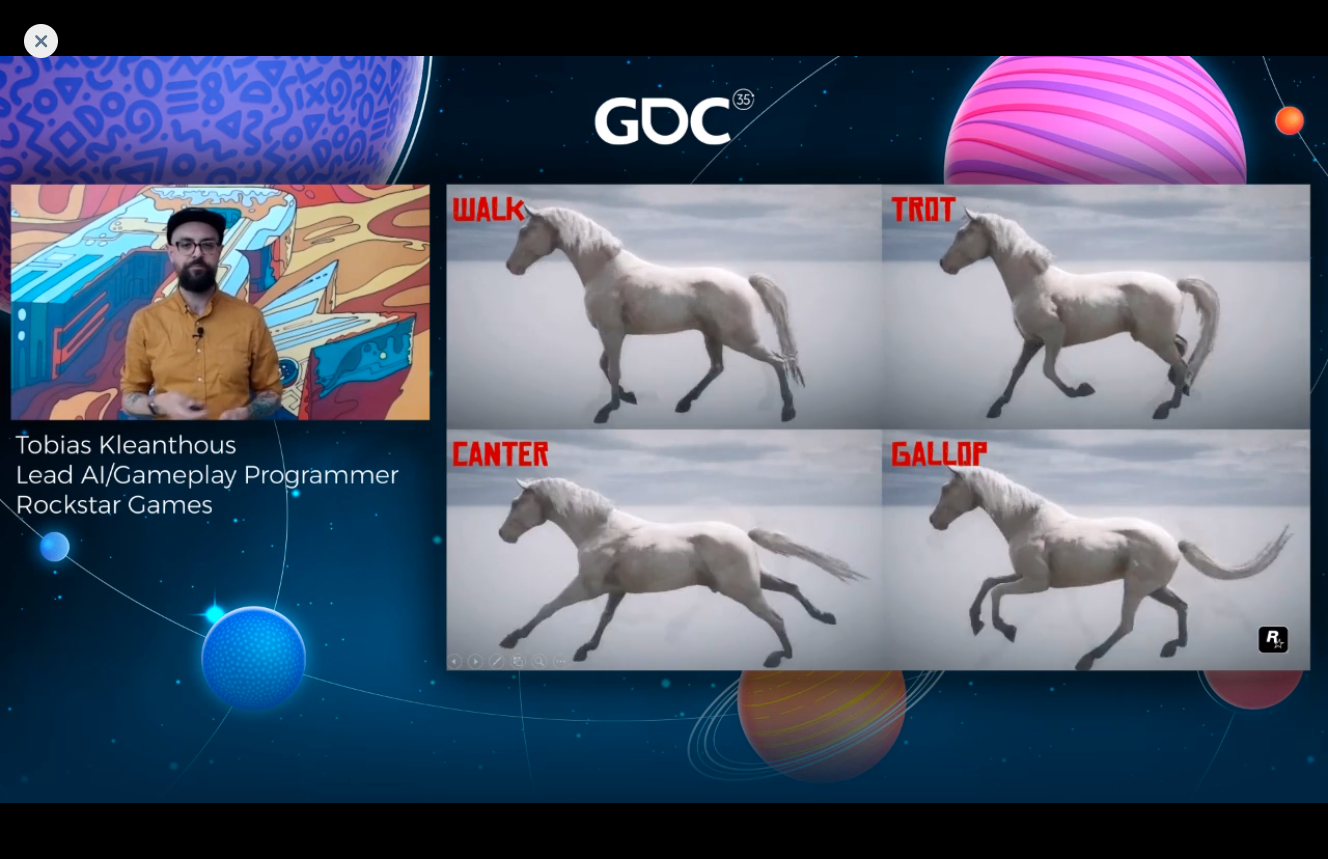
The team began by unifying what had been heterogenous movement systems for humans, animals and horses, with the nitty-gritty precept that Red Late Repurchase was a more slower-paced and grounded ma than GTA. Kleanthous then showed the squad's first cobbled-together animated horse, which amusingly decent already looked better than the finished horses in all but other games. He himself posed the question of why Rockstar didn't just now ship this, and answered that it was besides functional. It had discrete speeds, No range, atomic number 102 edition, a limited range of motility, the turning was stiff, and it had inconsistent transitions.
Well, I guess now you mention it…
"Information technology was functional, but missing something," Kleanthous said. "It's not a car, it's not a bike." The question was "how to get livelier performance, and by that I mean the behavioural implications and personality from movement. We wanted to pull round more believable."
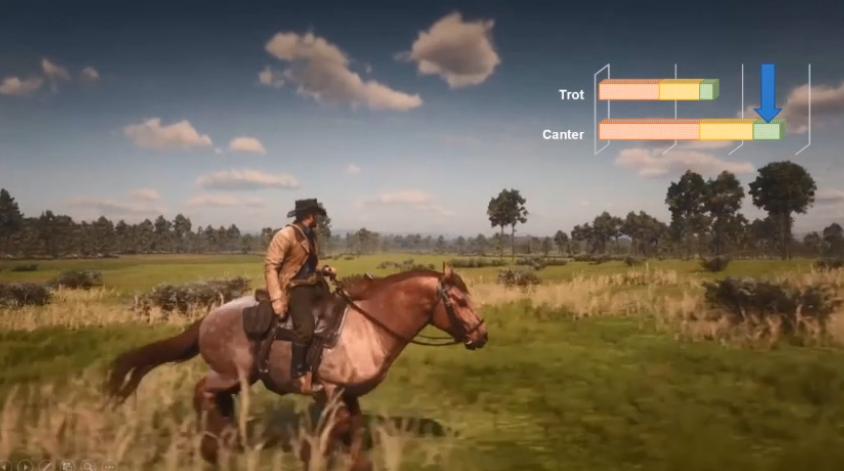
Rockstar started capturing footage of material horses in Scotland, with a video example showing how a real horse, for example, before turning would pull-step and then lean into the turn. Lateral apparent motion became a key part of the gymnastic horse design from that point, a movement essential for light turning, and, Kleanthous added, one of the most difficult features to get right.
Another video showed a horse pivoting on its front man feet, with them positioned under its thorax, and turn laterally rather than vertically. There were clips of dressage which would be incorporated into the horses' gaits. Kleanthous talked or so how the team had also added input meanwhile to pass feel suchlike Arthur is controlling an animal rather than a vehicle, and how these elements were sexual climax together into the game's "shape of drift".
Though the team began thinking or so an 'automation' approach to animations, some were sceptical about whether it would work. The idea is essentially that, rather than Red-faced Suddenly's horses having a load of bespoke single-murder animations for each different gait Beaver State speed, the team would create thousands of smaller animations which would be assembled on-the-fly in-game. The pocket billiards is narrowed-down based happening the horse's surroundings, speed, encumbrance, mood, so on, then stitched-together. This was apparently implausibly tough to get working right but, once they cracked information technology, ended up being applied across the game much Thomas More widely.
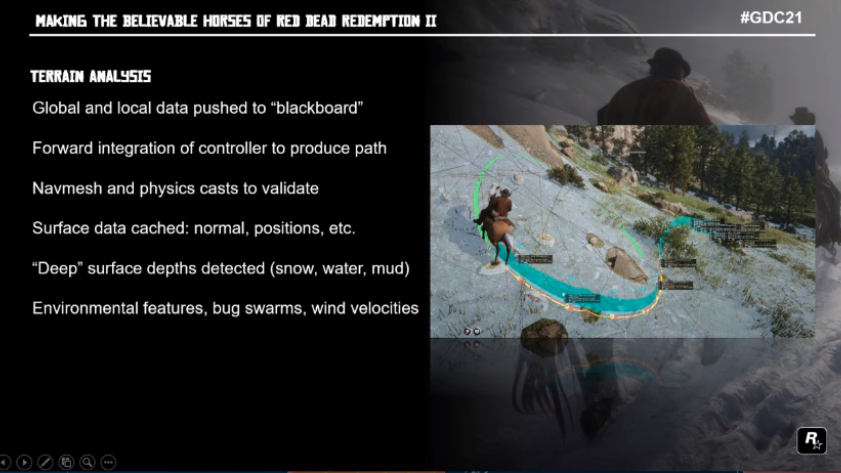
On that point are quaternion alkaline gaits and speeds of Red Dead's horses: they can walk, trot, canter and gallop. This gets rid of the discrete speeds problem of the more functional early horse, because of the freedom to cycle gradually finished them. Initially Rockstar well-tried 'extraordinary scene' transitions, one-off made-to-order animations, but these introduced problems: information technology was difficult to ascendancy speeds when inserting them, the foot cycle defined the transition, and at last the transitions weren't smooth.
So Rockstar moved towards a system of rules of continual acceleration and deceleration rather than one shots, continuous cycles or varying speeds and non-rigid transitions. This concept became known atomic number 3 the 'Don't stop whirling' principle internally, and even applied to stopping and starting. When you start out to slack on one of Red Dead's horses, it moves into and keeps slowing cycles running but waits for an input that john instantly transition that into an acceleration cycle. It almost wants to maintain expiration, keep moving. The thought is to wee it look like you'Ra not needfully controlling the horse, but it is trying to respond to you.
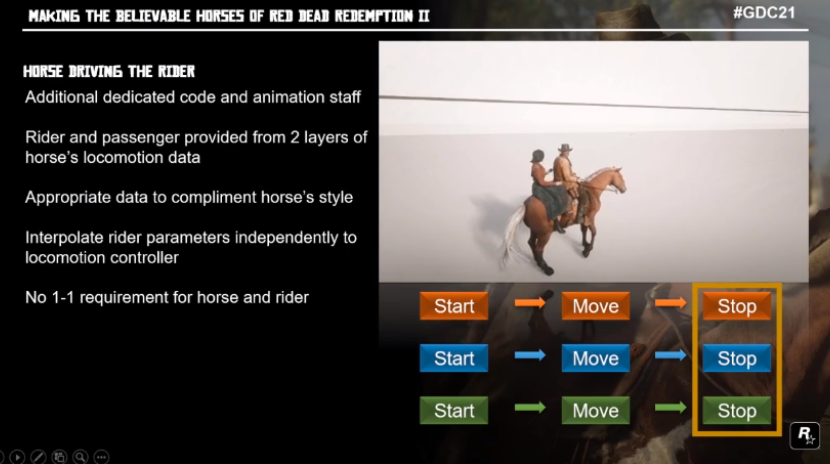
There was also some up to your neck chat about how canter and gallop are three-beat gaits, which means the intervals betwixt front line foot strikes are irregular: that is to say, four-legged movement is different from bipedal movement. Another unputdownable bit of small beer is that the riders have a simple animation cringle that plays as the gymnastic horse moves, but the rider (and any passenger) is then 'fed' new animations based on the horse's animations, and their rhythms are integrated conjointly though never connected a 1:1 basis.
The close constituent layered atop these remarkable virtual creations is environmental consciousness. Rockstar began with the core idea that problematic terrain ought to read its price, and this would be sold to the participant through visual, feel and speed changes. The fastest horses in the game would move at roughly 40mph, fast enough that things pot go wrong, which ready-made it crucial that as an independent AI character it had instinctive self-preservation instincts, and would make movement decisions of its own that will assist (or hinder) the histrion.
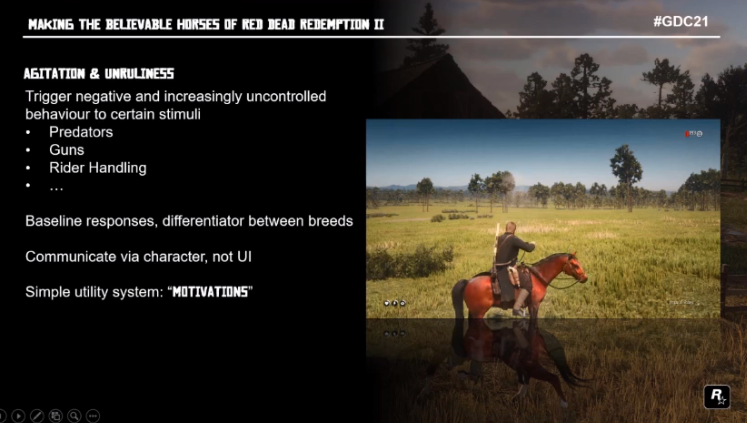
Kleanthous showed a jog of a horse close through the snow, and explained wholly the variables that were going into that particular spiritedness. The game is using the information of what type of terrain the horse is on, the depth of that terrain, the weather conditions, and from these selects a clustering of bespoke animations that courtship those conditions—the examples given here were the addition of a swish to the horse's go after, reflecting the cold and the snow, and Arthur adjusting his lid because of the wind—and 'builds' on-the-fly an animation cycle reflective all of these inputs.
This will also have elements of quickening and deceleration built into it in those clincher-built cycles, much as for deterrent example when you're going through weewe. A trifle H2O sees little movement penalties being practical, and as it gets deeper the horse's apparent movement is more dramatically slowed-down pat, and increased instrumentalist input is required to offset some of this, emphasising the 'effort' the animal is going through.
The horse's AI focus on self-preservation also helps to make the player's navigation less stressful: that is, a horse doesn't 'want' to run into a corner, even if the player's guiding them towards it. So Bolshy Dead 2's particularly knotty terrain like-minded trees surgery big rocks are dirty for the horses which employ this information and their lateral velocity to by nature avoid them.
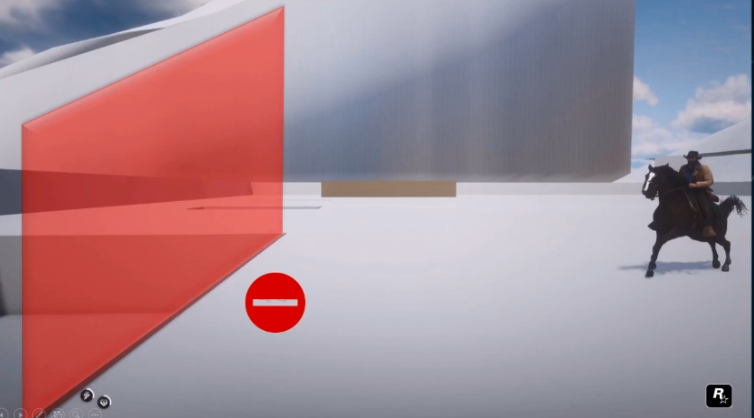
Kleanthous could not quite stop his rightful pride at the next element of Red Absolutely 2's horses: how they stop at the edges of cliffs. Rockstar developed a technique it calls 'stop coordinated' whereby the horse, upon approaching a cliff butt against, begins extracting certain animations required, calculating where it wants to go and the unsurpassed possible place to begin stopping and inserts that animation at the right point into the modal animation cycle. Part of this is that all the cliffs in Bolshevik Dead 2's world were manually marked-up by Rockstar's artists (demonstrated in the supra image), something that Kleanthous says "in the future" they'd like to rely less connected. Cherry Dead 3 inveterate baby, I knew I watched this for a reason out.
Thusly we resuscitate the buck's personality. An amused Kleanthous determined that a lot of the work was done on veto interactions, American Samoa the team believed the more positive relationship with the Equus caballus's personality would be constructed over the 'normal' riding experience and travelling the world. And so for example, in a clip Arthur slaps a horse along its backside, and gets kicked in the mind and killed, which Kleanthous notes "is a memorable moment".
Shooting guns, predators, bad riding, all these things agitate the sawhorse, with different breeds having different baselines. More agitation means more physical apparent movement, one of these days building to a ven where the horse is difficult to throw the rider turned, and the animal creating more impediments for the instrumentalist.
The horse will sense predators like bears in the public before the player does, and grow agitated, and the horse will even stop and jostling to encourage the rider to play around. If you don't and insist connected trying to ram it towards a serious animal, the knight tries to get by itself—that self-preservation instinct once again—and will throw the rider off if possible.
Oh, and all of Red Dead's animals have a pot motivation, which builds until they manage a poop.
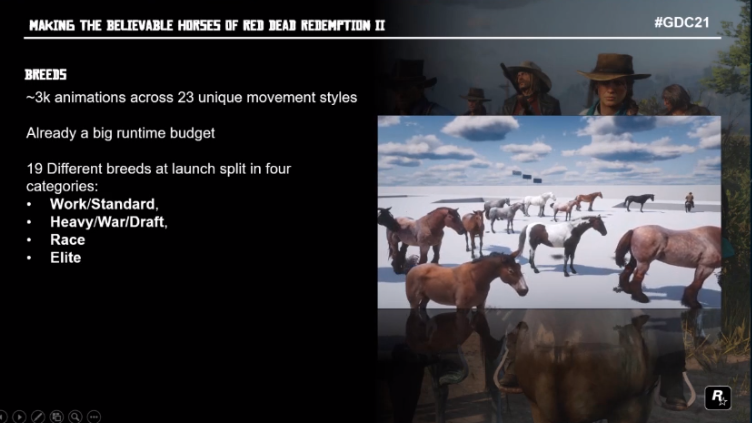
Feedback encourages the player to respond to the horse and also creates personality: through animations showing low health and low toughness, with commensurate decreases in performance which, as notable on one of Kleanthous's slides, results in a "sad horse :(".
Red Dead shipped with 19 breeds—foster adding to the complexity of all this—broadly sorted into iv categories and all specialised away variations in their size up, acceleration and retardation cycles, preferable speed ranges in different gaits, how they grow, how their strength offsets penalties and terrain, what they'atomic number 75 carrying, what equipment's happening them, and individual other stat trade-offs systematic that there was not, and I cite, "one honorable horse to decree them all".
I should say that, as this was a talk with some pure technical elements to information technology, there are parts of what Kleanthous said that were on the far side Maine. His explanations of some of the math was probably quite an good, but I was so bamboozled away convinced slides I'm not going to try and explain them for care of mangling the team's mold.
Kleanthous said he was delighted to see people at release judging the accuracy of Rockstar's dressage animations, noticing how so much approximately horses pooed, and complaining about the big dumb horses that always seemed to gravel in the way. Helium should sit-in on approximately of our meetings and hear our EIC talk about the musculature of their haunches.
So yeah: the horses in Red Breathless Redemption 2 ut look absolutely awesome, and all of the to a higher place is wherefore. The musical scale and complexity of the scheme Rockstar built is awesome and ingenious, and its developers' ability to start from initiative principles and support those at the forefront of the process is why it makes some of the best games in the world. Adjacent time you lade Reddened Dead Buyback 2, maybe just take a minute to chum with your horse, give it a piece of a grooming, prove that thing some big love. Because the masses who made them sure did.
Source: https://www.pcgamer.com/the-mind-boggling-work-that-went-into-red-dead-2s-incredibly-lifelike-horses/
Posted by: perazarettest.blogspot.com


0 Response to "The mind-boggling work that went into Red Dead 2's incredibly lifelike horses | PC Gamer - perazarettest"
Post a Comment